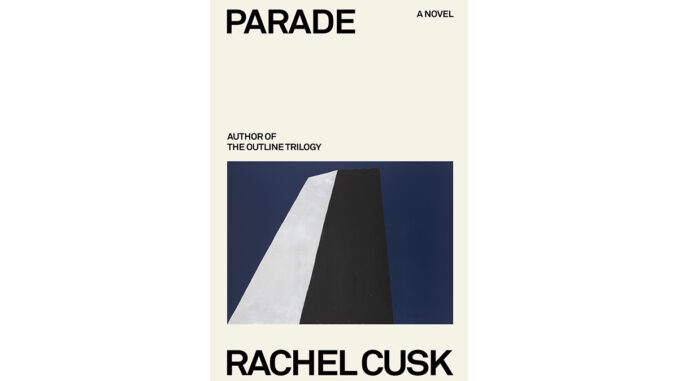
With her new novel “Parade,” writer Rachel Cusk returns with a searching look at the pain artists can capture and inflict. Never centered on a single person or place, the book ushers in a series of painters, sculptors and other figures, each grappling with a transformation in their life or work.
The novel opens by framing art as a subtle but piercing weapon. In one plot, the wife of the acclaimed painter “G” is deeply troubled by her husband’s urge to paint the world upside down. He also paints his wife’s nude figure upside down, making her ugly and grotesque.
In another, the book’s narrator is walking on the street in a foreign city when a deranged woman punches her. In the weeks afterward, still stunned by the blow, she begins to see her attacker as an artist: “She was making something there, something it would take several attempts to get right.”
“Parade” binds together scenes and voices like this throughout its short length, involving us in the questions and problems underlying art-making and human relationships. Cusk asks: What are the consequences of making art on the people around it? Can an artist transcend the same constraints and trauma transcribed in their work?
Many characters are visual artists, all given the mysterious name of “G,” who have turned to art as a form of survival or escape. There is G, the Black painter excluded from most exhibitions in his lifetime; and G, the female sculptor who created forms of giant black spiders and tiny headless dolls. Curiously, the book spends little time exploring the literary arts beyond a husband who tells his poet wife that he’s quitting his job and can no longer support her work.
Cusk’s shapeshifting narrator guides us through these snapshots without claiming a name or specific history. We are anchored only by the most minor details of time and place — enough to locate us in a European city or a scenic island — but without the specifics that might distract from the broader questions Cusk explores.
This is her distinct style — relinquishing the novel’s usual arc and instead trying to pierce some deeper truths through her characters. For that reason, “Parade” will resonate with fans of Cusk’s novels “Outline,” “Transit” and “Kudos,” which made waves for the same quiet but unrelenting voice.
But “Parade” is willing to go to darker places. The word “violence” reappears every few pages, applied to art, people and even the glinting face of a mountain that towers over the narrator’s seaside vacation. One of the book’s most engaging sections dissects a suicide that takes place at an art exhibit and raises the question of whether the art itself is implicated. Through her characters, Cusk shows us that art can be the site of violence, and also at times, the only medium through which to save oneself from it.

